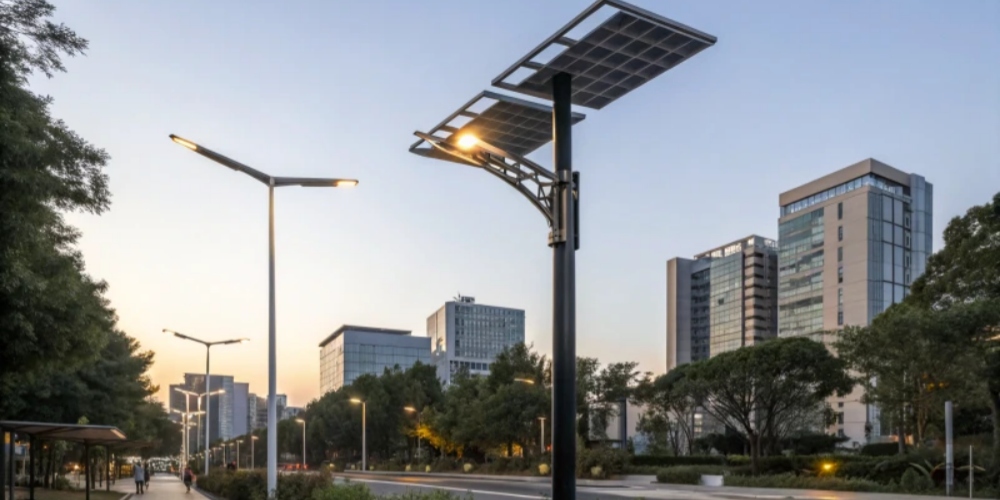With the increasing popularity of outdoor activities, especially camping, hiking, and adventure travel, more people are seeking reliable power solutions. When venturing into the wilderness, far from urban areas, individuals want to continue enjoying the conveniences of modern life, including lighting, communication devices, and small appliances. To meet this demand, portable power stations (also known as portable generators) have quickly become an essential tool for outdoor enthusiasts.
These compact yet powerful devices not only provide power for various devices but also serve as an ideal solution for emergency rescue, industrial work, and daily life. Portable power stations are gradually changing the way we access energy, especially in outdoor adventures and emergency situations, making them an important part of modern life.
What is a Portable Power Station?
A portable power station is an efficient and lightweight device designed to provide a reliable power supply, supporting AC, DC, and USB outputs. It typically comes equipped with a built-in battery, which can be charged through various methods, including solar power, car charging, or conventional power outlets. Portable power stations can supply power to traditional appliances as well as meet diverse needs, including outdoor lighting, charging electronic devices, and providing backup power for medical equipment.
Main Applications of Portable Power Stations
1. Outdoor Adventures
Portable power stations greatly enhance the convenience of outdoor activities. Whether it's camping, hiking, or road trips, these devices provide stable power for outdoor lighting, portable refrigerators, small stoves, and GPS devices, ensuring that equipment continues to function throughout the trip. For example, a 1200W Outdoor Power Station is suitable for small appliances and standard camping needs, offering reliable power support for lamps, phones, cameras, and more.
2. Emergency Backup Power
In the event of natural disasters, power outages, or other emergencies, a portable power station can serve as a reliable backup power source. It can supply continuous power for communication tools, medical devices, emergency lights, and other essential equipment. For instance, for patients dependent on respirators, a portable power station ensures uninterrupted medical support.
3. Industrial and On-Site Applications
Portable power stations also play a crucial role in industrial and on-site work, particularly in remote locations. They can power on-site tools, equipment, and appliances, reducing work delays caused by power interruptions. For example, a 2400W Outdoor Power Station provides higher power output, making it suitable for large power-consuming devices and tools.
4. Sustainable Energy Solutions
Many modern portable power stations support solar charging, making them an ideal choice for environmentally-conscious users. By using solar energy for charging, these devices reduce carbon emissions and promote sustainable lifestyles. During outdoor adventures, solar charging helps ensure continuous operation of the device, reducing reliance on traditional energy sources.
Key Features of Portable Power Stations
1. Battery Capacity and Power Output
The battery capacity and power output of a portable power station determine how long it can supply power to devices. When choosing the right power station, it's important to match the power output with your actual needs.
2. Multiple Output Interfaces
Portable power stations typically feature multiple output interfaces, including AC, DC, and USB ports, allowing them to power a wide variety of devices. The versatility of these interfaces increases the flexibility of the power station, enabling users to power multiple devices simultaneously.
3. Diverse Charging Methods
To ensure stable usage in different environments, many portable power stations support various charging methods, such as solar charging, car charging, and wall outlet charging. The availability of multiple charging options ensures that the power station remains charged, whether in urban or outdoor settings.
4. Portability and Durability
Portable power stations designed for outdoor environments are both convenient and sturdy, capable of withstanding harsh weather and complex conditions. For example, the outer casing of portable power stations is typically made of durable, impact-resistant materials that can endure prolonged use and movement.
5. Safety
To ensure no faults or accidents occur during use, modern portable power stations are often equipped with built-in safety features, such as overcharge protection, short-circuit protection, and over-temperature protection. These features provide additional safety for users.
Future Trends of Portable Power Stations
With the continuous advancement of technology, the functions of portable power stations are constantly being upgraded. Future portable power stations will not only improve in power and battery life but may also include more intelligent features, such as the ability to monitor, manage, and control power usage through a smartphone app. Additionally, as solar technology develops, the efficiency and convenience of solar charging will further improve, making portable power stations an ideal choice for more households and outdoor enthusiasts.
Enecell is a professional supplier of portable power stations in China, offering outdoor power stations and portable devices ranging from 700W to 5000W. Their products provide stable power for industrial equipment, on-site tools, and emergency devices, supporting AC, DC, and USB outputs. The power stations can be charged via solar energy or car plugs, ensuring continuous power supply for appliances like refrigerators and coffee machines during emergencies.



